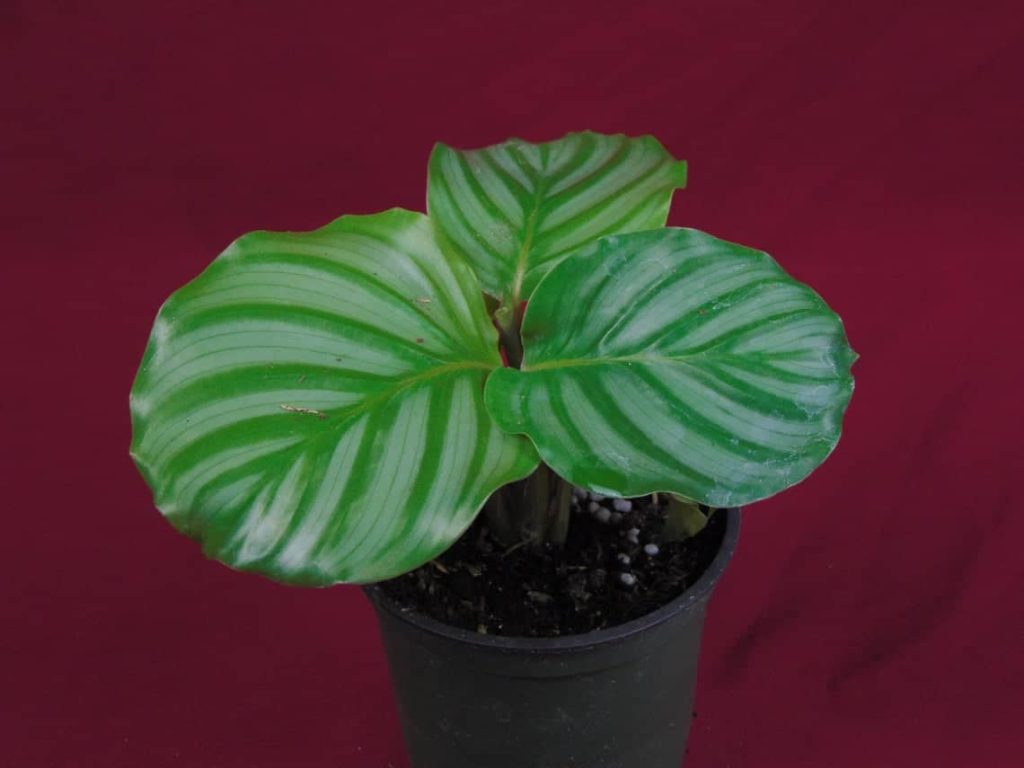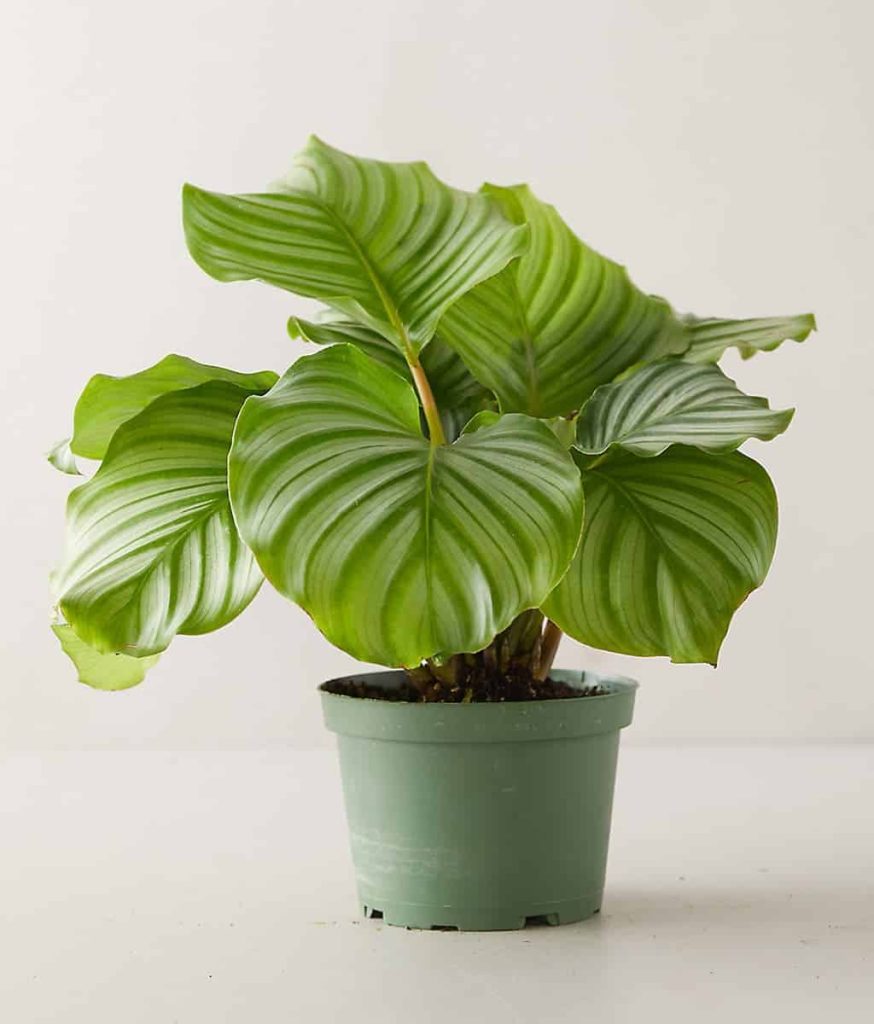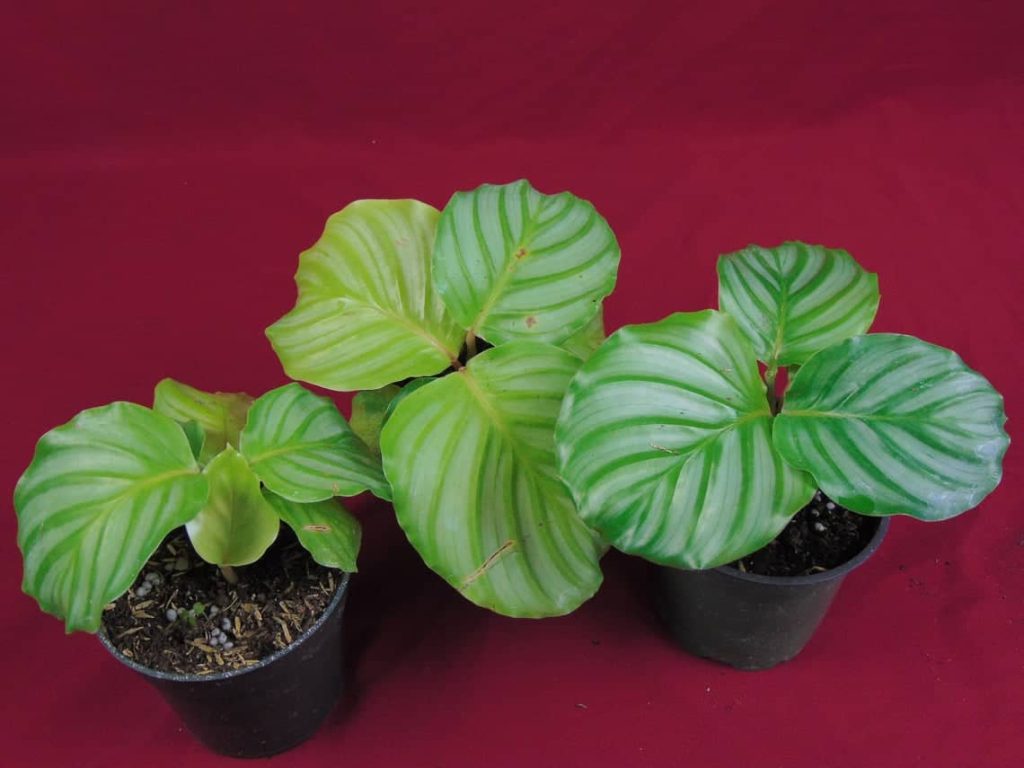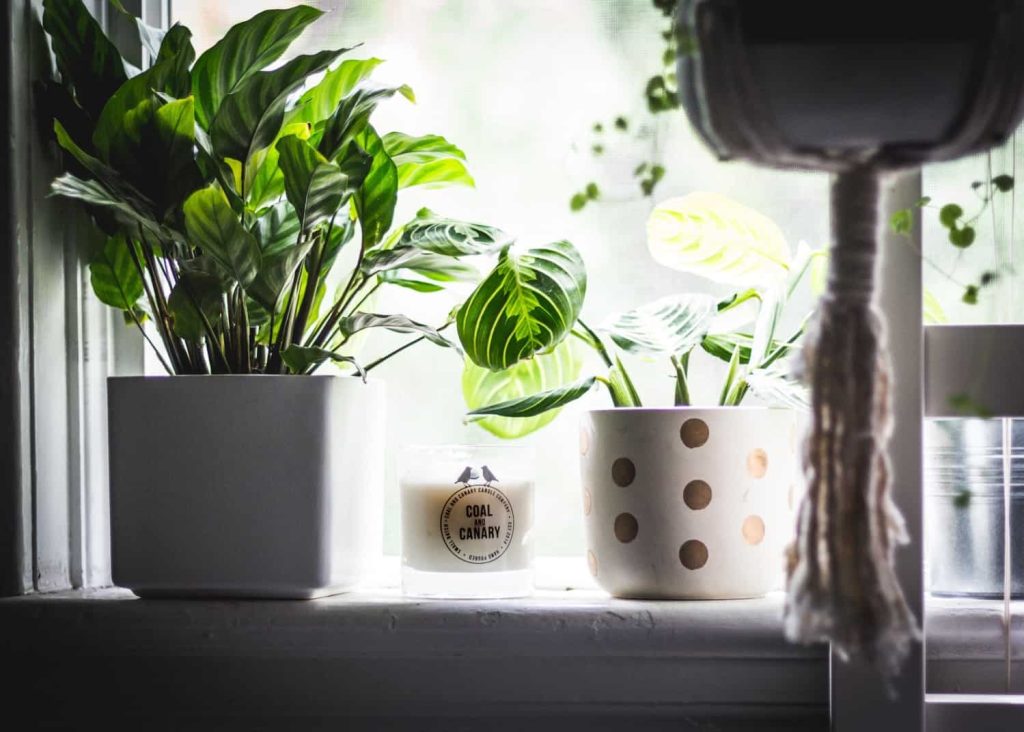Calathea orbifolia is the kind of plant we regard as “for everyone”. It is one of the most popular plants in the world, so much so that non-gardeners are familiar with it.
For us gardeners, the calathea orbifolia is not just a regular plant you add to your house-plant collections, it is a gorgeous plant with beautiful unique leaves that will change the look of whatever space it is placed in.
Apart from its beauty, we also dare to say that the calathea orbifolia is an easy plant to grow, indoors! Although we have had a lot of people complain about how fussy the orbifolia plant can get, this is probably because the right care guide isn’t followed. The calathea orbifolia is stress-free in the appropriate environment.
We have provided all the right information you need to grow your orbifolia successfully.
Calathea Orbifolia Explained
| Common name | Prayer plant |
| Botanical name | Calathea orbifolia |
| Plant type | Flowering houseplant |
| Soil type | Well-drained |
| Soil Ph | 5.0 to 6.0 |
| Water | Evenly watered |
| Humidity | Moderate to high |
| Temperature | 55 to 70 degrees F |
| Origin | Bolivia, South America |
| Toxicity | Non-toxic. |
The calathea orbifolia is a variety from the prayer plant family also known as the calathea.
The orbifolia is one of the largest and most popular calathea plants you can grow. Known to be from the South American country of Bolivia, the plant is characterized by its large, oval-shaped, green leaf, which has silver linings on it.
The calathea orbifolia plant can grow to about 10 inches, indoors.
Calathea Orbifolia Propagation
Propagating plants is one aspect of gardening that many gardeners love to do. You can be certain you will have the orbifolia plant in your home for a long time; you can also give them out! The calathea orbifolia can be propagated via division and this should be done at the beginning of the growing season, early spring. Below are steps to properly propagate your calathea orbifold plant.
Step 1
Identify and select a healthy orbifolia plant, and carefully bring it out of its pot. Shake off the dirt attached to the roots of the plants. Make sure you do not cut off the roots while getting rid of the dirt.
Step 2
Divide the plant into two or more, if the plant is big. Ensure that each division is attached to some roots, and has at least a few stems and leaves.

Step 3
Plant each division into a container of quality potting soil; make sure the soil is well-drained, to aid proper growth. Cover each container of plant with a clear, plastic bag, this will help keep moisture. Afterward, place the plant in low, indirect light. Your plant’s root will become strong soon and it will adjust properly to its new home.
Step 4
Remove the plastic bag at the 4th week, and then you can transfer your propagated plant to bright, indirect light, and also introduce your plant to the regular orbifolia plant care.
Calathea Orbifolia Care Guide
Although calathea orbifolia is an easy plant to grow, a lot of people still do not find it easy; we simply attribute this failure to the wrong care guide. The right care guide should model what the plant must have been receiving in its natural habitat. The following are the best care guide for your calathea orbifolia.
1. Light
In the tropical forest in Bolivia, the calathea orbifolia was found growing under partially shaded places, due to this, we conclude that the plant is best placed in bright, indirect light. The plant should be protected from direct sunlight, as this can cause the leaves to fade and hinder the plant’s growth.
They should also not be placed in dim light, it can cause slow growth. You can also place your plant in the morning sun, but shield it from the afternoon sun.

2. Water
For the plants in the calathea family, watering is germane to their growth. To keep the orbifolia plant living, it has to receive the appropriate measure of water. The plant strives for balance and unfortunately, a lot of people get it wrong here.
Orbifolia wants to be left moist, but not over-wet; it also must not get dry. We recommend that you check your soil in between watering, this can be done by dipping your finger into the soil, if the top 2 inches are dry, then it should be evenly watered.
Calathea orbifolia is very sensitive to the type of water that is being used also, tap water contains salt and chlorine and this is bad for your plant. Steer clear from tap water, instead, make use of purified water.
3. Soil
When it comes to the type of soil for your plant, we may not be able to specifically tell you a type; however, the most important requirement for the calathea plant is that it has to be well-draining.
This means that your potting mix has to include materials that enhance drainage and retain moisture. We recommend a potting mix with peat moss. The plant will grow well in slightly acidic soil, a pH range of 5.0 to 6.0 will do.
These soils are available at your local nursery or gardening center if you cannot mix them yourself. Ensure you do not grow your calathea plant in soils that are two sandy, dry, or wet.
4. Fertilizer
The best time to fertilize your orbifolia plant is during the growing season. Make use of tropical plant fertilizers and apply only once in 4 weeks. We advise strongly that your fertilizer be diluted to half its strength before it is applied, too much fertilizer can burn and damage your plant.
5. Humidity
The humidity level for your orbifolia plant is a very important thing to your plant. Hence, for proper growth, your calathea orbifolia will enjoy being provided between medium to high humidity levels.
You can place your plant in locations in the house, where natural humidity is accessible i.e., kitchen, bathroom, etc. you can also increase the humidity level for your plant by providing peddle tray, misting the plant regularly, or purchasing a humidifier.
You can check your home’s humidity level with the use of a hygrometer.

6. Temperature
As a tropical plant that the calathea orbifolia is, it does well in warm temperatures.
The plant can be grown at a temperature ranging from 55 to 70 degrees F. The plant mustn’t be introduced to any temperature that is lower than 55. Protect your plant from cold drafts and sudden temperature changes; this may hinder your plant’s growth.
Calathea Orbifolia FAQs
How much humidity does a Calathea need?
A Calathea needs a humidity level between 45% and 50%. Calatheas thrive in low humid environments with relatively warm temperatures. If your environment does not provide the humidity level your Calathea needs to survive, you need to improvise by misting regularly or using a humidifier. You could purchase humidifiers from online stores. in the absence of misting and humidifiers, grouping plants improve the humidity level because plants release moisture through a process known as transpiration.
How much sunlight does a Calathea need?
Your Calathea Orbifolia requires about 4 to 5 hours of bright but indirect sunlight to thrive. Insufficient exposure to lighting is detrimental to the growth of the plant although Calatheas can still survive in low light longer than other house plants. Exposure to direct sunlight would burn your leaves thereby damaging the foliage appearance of the plant.
Is Calathea Orbifolia hard to care for?
Yes, Calathea Orbifolia can be hard to care for when its growers are not equipped with sufficient information needed to propagate the plant successfully. The reason Calathea Orbifolia is regarded as a hard plant to care for is its susceptibility to drooping and changes in foliage appearance. These problems can be averted if the grower provided the basic requirements needed for its thriving: adequate lighting, sufficient watering, organic soil, a good drainage pot, and a low humidity environment.
How often should I water Calathea Orbifolia?
The Calathea Orbifolia needs to be watered as soon as the soil surface gets dry. If the soil of a Calathea Orbifolia is dry for long, it would be unable to supply the necessary nutrients needed for the roots and the plant. The effect of underwatering is a change in foliage appearance which manifests in browning, yellowing, or curling leaves. After watering, the soil mixture must not end up soggy but moist. Overwatering is responsible for soggy soil which is a major cause of root rot.
Why is my Calathea Orbifolia drooping?
Your Calathea Orbifolia may be drooping for either of these reasons, overwatering, underwatering and poor humidity. When Calathea Orbifolia is deprived of a sufficient amount of water, the soil is deprived of necessary nutrients and it begins to droop. If overwatered, the soil would become soggy causing root rot which is a serious condition for the plant and growth would be stunted. Poor humidity is also responsible for drooping leaves as they contribute to root diseases, loss of quality, and plant stress.
Is Calathea Orbifolia fast-growing?
Yes, Calathea Orbifolias are fast-growing when the requirements are provided for its growth. A proper and sufficient supply of the essentials would produce a fast-growing Calathea Orbifolia. When they receive adequate nutrients, they can grow up to 3 feet in height and the leaves can grow 30cm in width.
When should I repot Orbifolia?
The Calathea Orbifolia should be repotted when the plant has started outgrowing its pot or container. In addition, the Orbifolia can be repotted in a situation of improper soil mixture due to overwatering or wrong potting containers. Some containers are not suitable for growing Calathea Orbifolia because they contain harmful elements that can damage the plant. a metallic container is the wrong idea for your Calathea
Why are the leaves on my Calathea turning brown?
Calatheas turn brown they are either underwatered, overwatered, exposed to mineral build-up in the soil, or exposure to direct sunlight. Overwatering and underwatering are dependent on the amount of water your Calathea is receiving. If insufficient, the foliage appearance would start changing, and if in excess, the soil would become soggy which is an unfavorable place for your Calathea to grow. Chemicals added to water contribute to mineral build-up in water. The most appropriate is the Rainwater for watering. In the absence of rainwater, distilled water can be used.
Final Thoughts
We are convinced that the orbifolia plant isn’t as stressful as many claims, you only have to treat it right. Your plant will not tolerate mistakes with its type of soil, water, fertilizer, etc.
- Unlike many other plants, pruning isn’t necessary for the calathea plant, however, you will need to get rid of dead, damaged, yellow, brown, discolored leaves.
- We recommend that you prepare to re-pot your plant every one or two years. Ensure the pot in which you’re moving your plant is at least two inches bigger than the former.
- The calathea orbifolia, like all other calathea plants, is not toxic, it can be kept around children and pets.
- Curling of leaves is one of the most common problems that calathea orbifolia have, this is caused by under-watering. Water your plant more often if you notice this change in your plant.
- Your plant may be susceptible to insects like spider mites. You can get rid of them with the use of water-soluble pesticides.
- Improper temperature and low humidity can make your plant brown and dry, observe your plant to determine the problem and adjust.
With the additional tips we will be provided below, we are certain your plant will grow as healthy as it should be.
Read these next:

